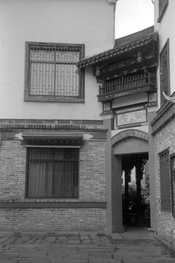Mani_Reshad
Member
Hey there everyone!
I’ve been digging this „PC-TEA“ developer with the dilution of 1+50 and using the development times for 1+1 D-76 which was recommended in „the darkroom cookbook“ and as it was mentioned in that book, this obscure recipe is supposed to have some kind of super fine-grain effect on films such as HP5 and TMax400 as Anchell has mentioned it himself. The whole developer gives what I’ve read it would; compensation qualities and great acutance but for some reason not the fineness of grain. I’m overall pretty pleased with the results with a bit of editing in post but the graininess is not what I would call „super fine“. I have to mention that I’ve used it on a Kentmere pan 400 which might be the reason after all but I was just wondering if the promised fineness of grain on HP5 is true or not.
Here’s a sample picture from the 35mm roll I shot.

I’ve been digging this „PC-TEA“ developer with the dilution of 1+50 and using the development times for 1+1 D-76 which was recommended in „the darkroom cookbook“ and as it was mentioned in that book, this obscure recipe is supposed to have some kind of super fine-grain effect on films such as HP5 and TMax400 as Anchell has mentioned it himself. The whole developer gives what I’ve read it would; compensation qualities and great acutance but for some reason not the fineness of grain. I’m overall pretty pleased with the results with a bit of editing in post but the graininess is not what I would call „super fine“. I have to mention that I’ve used it on a Kentmere pan 400 which might be the reason after all but I was just wondering if the promised fineness of grain on HP5 is true or not.
Here’s a sample picture from the 35mm roll I shot.












